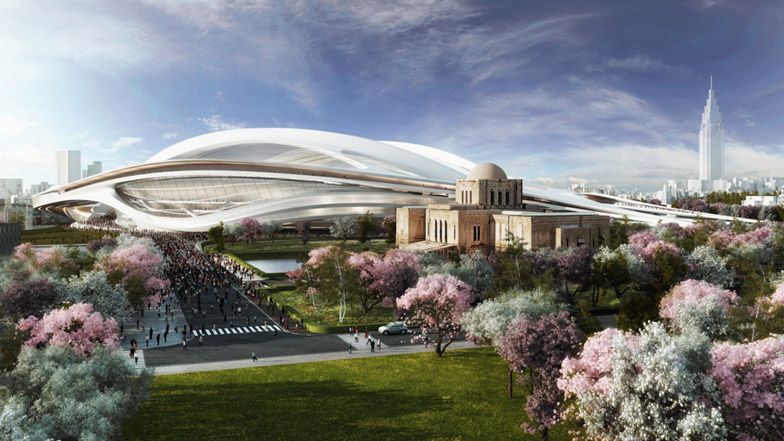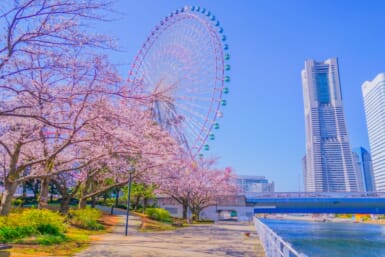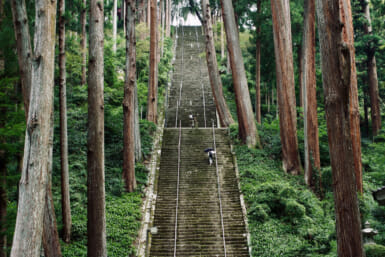As costs and criticisms steadily mounted to new, unprecedented heights, plans for the 2020 Tokyo Olympic stadium were officially scrapped on Friday.
At $2 billion, it was poised to be the most expensive sports venue in history, more than doubling initial estimates. But controversy over such lofty costs seemed to be almost eclipsed by complaints about the building’s aesthetics. A recent Guardian article described a symposium of top Japanese architects who called the structure a “monstrosity.” The story also cited a petition of 80,000 signees (ironically equal to the stadium’s planned 80,000 seats) who complained about the stadium’s proposed height—a staggering 70 meters in a historic district that otherwise limited the height of its buildings to 20 meters.
Early proponents may have been excited when award-winning architect Zaha Hadid was chosen to design the behemoth stadium. However, when she unveiled drafts of the structure in 2013, many of her fellow architects—and much of the greater public—were quick to ridicule its bike helmet motif, comprised of curved steel arches. The most scathing critique of all came from esteemed elder architect Arata Isozaki, who implored the Japan Sports Council in an open letter late last year to avoid building such a “disgrace to future generations” before likening the stadium’s appearance to “a turtle waiting for Japan to sink so that it can swim away.”
However, Japanese officials made no reference to those aesthetic controversies in its announcement of the scrapped stadium design, citing budgetary issues instead. The Associated Press quoted Prime Minister Shinzo Abe as saying: “We have decided to go back to the start on the Tokyo Olympics–Paralympics stadium plan, and start over from zero … The cost has ballooned just too much.”
Tokyo Governor Yoichi Masuzoe attacked the Abe administration for having allowed things to have gone as far as they did. According to a Japan Times article, the Governor wrote in his blog that the Education, Culture, Sports, Science and Technology Ministry was “incapable and irresponsible and that is the foremost reason behind the mistake.” Masuzoe even suggested “Abe and his Cabinet ministers form a headquarters to lead the project to build a new centerpiece stadium for the 2020 Tokyo Olympics.”
That article also noted that criticism of the stadium was not limited to locals—its staggering cost also chafed with the International Olympic Committee’s “Olympic Agenda 2020” reform program, designed to keep the games and encourage sustainable venues for local use long after the Olympics’ closing ceremonies.
But not all sports fans were pleased about the stadium’s demise. Before the Olympics, the Tokyo facility was scheduled to host the 2019 Rugby World Cup. Now that coordinators are starting from scratch, they will no longer be able to complete construction in time for that earlier event, a development that left World Rugby releasing a statement saying it was “extremely disappointed” because, according to the AP, “Japan has repeatedly assured the stadium would be ready for 2019.” An alternative may be nearby Yokohama’s 72,000-seat International Stadium, which is 8000 shy of Zaha Hadid’s 80,000 seat design, but was still big enough to host the 2002 World Cup final.
The Wall Street Journal quoted a statement from Ms. Hadid’s company, Zaha Hadid Architects, in which the firm defended the design and insisted that culpability lay elsewhere, adding: “The real challenge for the stadium has been agreeing to an acceptable construction cost against the backdrop of steep annual increases in construction costs in Tokyo and a fixed deadline.”
Officials were equally quick to pass the buck, with Abe pointing out that the design was approved before he took office. Former rugby player and Prime Minister Yoshiro Mori, who now chairs the Olympic committee, was reported to have pushed for the venue to be ready in time for the 2019 Rugby World Cup, which comes as no surprise, because he is also the president of the Japan Rugby Football Union. However, he too went on record with his disdain for the stadium’s design, saying it looked akin to a “raw oyster oozing out” of its shell. His opposition to the building was further cemented on Friday when, according to the Wall Street Journal, “Mori backed down after a nearly two-hour meeting with Mr. Abe and other sports officials” who argued that completing the stadium in time for 2019 would have led to rampant construction costs. Abe was quoted as saying: “The Olympics are a celebration for the Japanese people. The main players are the Japanese people and the athletes. We must have an event that has everyone’s blessing.”
But some sports enthusiasts are having more fun at the Games’ overall expense than any skyline aficionados had when drumming up insults about the stadium. The South China Morning Post recently reported on a rival athletic extravaganza dubbed the “Lube Olympics,” which involve “contestants in crash helmets…lathered in…jelly on a slimy floor battle it out in sports such as sumo, tug of war and human curling—with largely chaotic results.” The article went on to quote a coordinator for this zany—and far less contentious—event, who said: “The aim is to hold the Slimy Olympics at the same time as the 2020 Tokyo Olympics and invite the world. Everyone covered in jelly and sliding about—it’s a fantastic way to make new friends.”
—Kyle Mullin
Image: Dezeen









